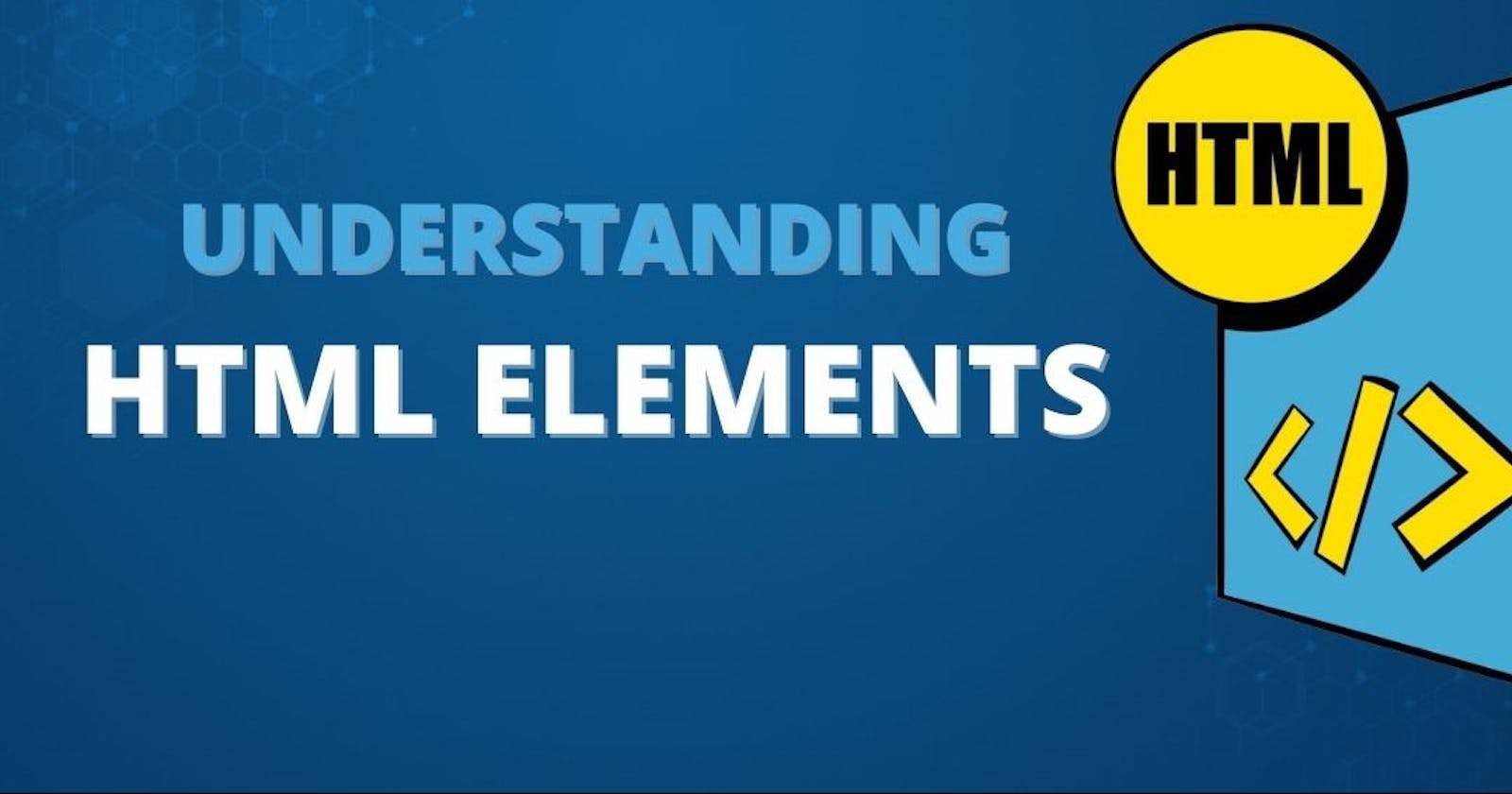Table of contents
No headings in the article.
HTML (Hypertext Markup Language) is the standard markup language used for creating web pages. It consists of a set of elements that define the structure and content of a webpage. In this article, we will explore some common HTML elements and provide examples to help you understand their usage.
<h1>to<h6>: Heading Elements The<h1>to<h6>elements represent different levels of headings, with<h1>being the highest level (most important) and<h6>being the lowest. These elements are used to define the headings and subheadings on a webpage. Here's an example:
htmlCopy code<h1>Welcome to My Website</h1>
<h2>About Me</h2>
<h3>Education</h3>
<p>: Paragraph Element The<p>element is used to define a paragraph of text. It is commonly used for adding regular text content on a webpage. Here's an example:
htmlCopy code<p>Lorem ipsum dolor sit amet, consectetur adipiscing elit. Fusce commodo augue eu turpis fringilla ultricies.</p>
<a>: Anchor Element The<a>element, also known as the anchor element, is used to create hyperlinks. It allows you to link to other web pages, files, or specific parts of a webpage. Here's an example:
htmlCopy code<a href="https://www.example.com">Visit Example Website</a>
<img>: Image Element The<img>element is used to embed images into a webpage. It requires thesrcattribute to specify the image URL and thealtattribute to provide alternative text for accessibility purposes. Here's an example:
htmlCopy code<img src="image.jpg" alt="A beautiful sunset">
<ul>and<li>: Unordered List and List Item Elements The<ul>element is used to create an unordered (bulleted) list, and the<li>element is used to define individual list items within the list. Here's an example:
htmlCopy code<ul>
<li>Item 1</li>
<li>Item 2</li>
<li>Item 3</li>
</ul>
<div>: Division Element The<div>element is a generic container that allows you to group and style other elements together. It is commonly used for layout purposes. Here's an example:
htmlCopy code<div>
<h1>Welcome</h1>
<p>This is my website.</p>
</div>
These are just a few examples of the many HTML elements available. Each element serves a specific purpose and can be customized further using CSS (Cascading Style Sheets) to control their appearance on the webpage.
Remember, HTML elements are the building blocks of a webpage. By understanding and utilizing these elements effectively, you can create well-structured and visually appealing web content. Experiment with different elements and explore the vast possibilities of HTML to enhance your web development skills.
